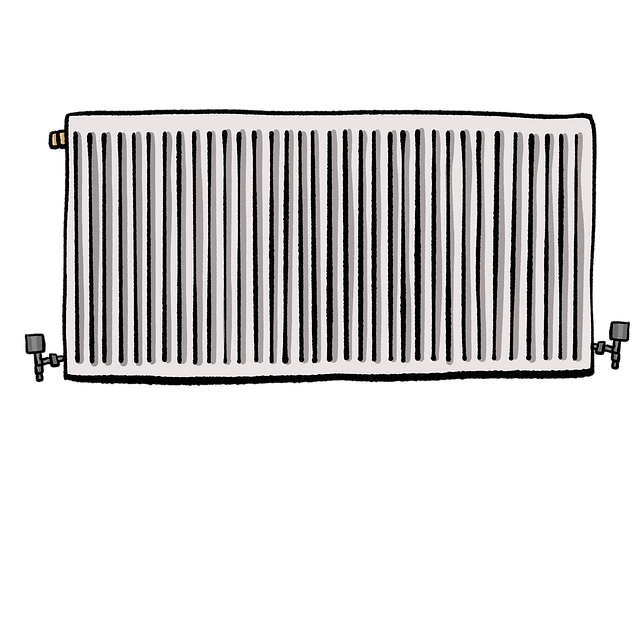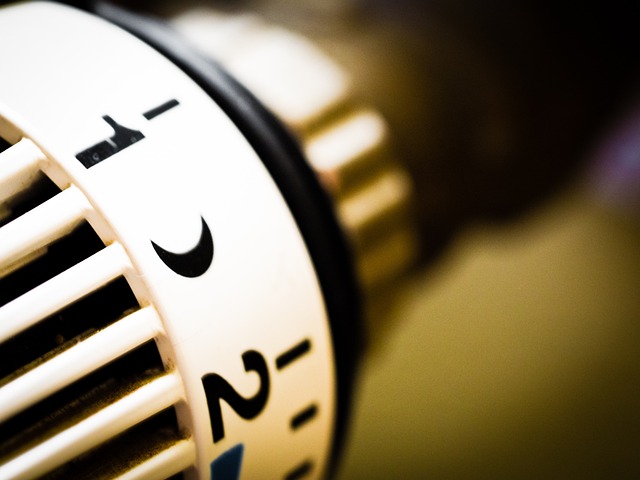When installing a central heating system, consider heat sources (boilers or heat pumps), distribution methods (radiators/underfloor mats), and control mechanisms (thermostats). System type depends on home size, insulation, climate, and cost. Maintenance involves efficient thermostat settings and condensate management. Compare gas and electric fuel types based on speed of heat generation, costs, environmental impact, and home size. Optimize installation with smart thermostats and efficient insulation for energy savings and comfort.
Thinking of upgrading your home’s central heating system? This guide is your go-to resource for navigating the world of central heating installations. From understanding basic principles to exploring advanced technologies, we demystify the process. We delve into traditional boiler systems, the benefits and drawbacks of heat pump technology, and a crucial comparison between gas and electric fuel sources. Additionally, learn about smart thermostats and insulation as efficient, cost-saving options for your central heating setup.
- Understanding Central Heating Installation Basics
- Exploring Traditional Boiler Systems
- Heat Pump Technology Explained
- Comparing Fuel Sources: Gas vs Electric
- Efficient Options: Smart Thermostats & Insulation
Understanding Central Heating Installation Basics

When considering a new central heating system, understanding the installation process is key. Central heating installation involves several components, including a heat source (such as a boiler or heat pump), distribution methods like radiators or underfloor heating mats, and control mechanisms like thermostats. The choice of system depends on factors like your home’s size, insulation, and climate.
There are two primary types to consider: ducted and vented systems. Ducted central heating features a network of air ducts hidden within walls or ceilings to distribute warm air evenly throughout your space. Vented systems, on the other hand, use radiators or floor heaters connected to piping that circulates hot water or steam. Cost varies based on system type, size, and efficiency; replacing an old system can range from hundreds to thousands of dollars. Adjusting thermostat settings for energy efficiency and understanding condensate management, where excess moisture from heating is collected and removed, are crucial aspects of maintaining a new central heating system.
Exploring Traditional Boiler Systems

Traditional boiler systems have long been a staple in central heating installations, providing efficient warmth to homes across various regions. These systems operate by heating water, which is then circulated through radiators or underfloor heating systems to distribute heat throughout the home. Boilers typically use natural gas, oil, or electricity as fuel sources, with each option offering distinct advantages and considerations for homeowners.
When exploring central heating installation options, understanding the control and customization available is essential. Modern boilers often come equipped with smart controls, allowing homeowners to precisely regulate temperature settings and programming. Moreover, warranties play a significant role in ensuring peace of mind for homeowners investing in these systems. Many manufacturers provide comprehensive coverage, guaranteeing performance and protecting against unforeseen repairs or replacements.
Heat Pump Technology Explained

Heat pump technology has emerged as a highly efficient and sustainable option for central heating installation. Unlike traditional systems that rely on burning fossil fuels, heat pumps extract warmth from the external environment—even in cold weather—and transfer it indoors. This process is achieved through a series of compression and expansion cycles using a refrigerant, making them significantly more energy-efficient than conventional central heating options.
When considering comparing fuel types and prices for central heating installation, heat pumps stand out due to their versatility and cost-effectiveness. They can be powered by electricity or renewable sources like geothermal energy, reducing reliance on fossil fuels and associated costs. Moreover, proper maintenance and materials selection are crucial to ensure optimal performance and longevity of the heat pump system. Reputable central heating installation professionals can guide homeowners in choosing the best model for their needs while offering advice on regular maintenance practices.
Comparing Fuel Sources: Gas vs Electric

When considering a central heating installation, one of the primary decisions involves choosing between gas and electric fuel sources. Both options have their advantages and disadvantages, with factors like cost-effectiveness, environmental impact, and ease of maintenance playing key roles. Gas central heating systems, for instance, often provide faster heat generation due to direct combustion, making them efficient during sudden cold spells. They can also be more affordable to run compared to electric alternatives, as gas prices are generally lower. However, installation costs tend to be higher, and who is responsible for central heating maintenance? can vary depending on local regulations.
On the other hand, electric systems offer a cleaner burning process with minimal combustion byproducts, making them environmentally friendly and potentially more efficient in well-insulated homes. Since they don’t require complex gas lines or ventilation systems, installation might be less costly initially. However, electricity prices can fluctuate, and high demand may lead to increased costs. Moreover, electric heaters may not be suitable for larger spaces unless multiple units are installed, which could impact overall energy usage and maintenance requirements. When deciding between these options, it’s crucial to consider your budget, home size, and long-term energy goals, possibly with the help of a professional to get a tailored quote.
Efficient Options: Smart Thermostats & Insulation

When considering efficient options for your central heating installation, investing in smart thermostats and proper insulation is a great place to start. Smart thermostats allow homeowners to precisely control temperature settings, ensuring energy efficiency and comfort. These devices can learn your habits and automatically adjust heating levels, saving you money on energy bills. By programming the thermostat to reduce heat when you’re away or asleep, you can achieve significant energy savings without compromising on comfort.
Insulation plays a crucial role in maintaining optimal temperatures. An old or inadequate insulation system can lead to heat loss during winters, making your central heating system work overtime. Professionals recommend regular checks and upgrades to ensure your home is properly insulated. By sealing gaps and adding insulation to attics, walls, and floors, you create a barrier that retains heat, reducing the need for frequent or excessive central heating usage. This not only saves energy but also creates a more comfortable living environment.
When considering a central heating installation, understanding the various options available is key. From traditional boiler systems to innovative heat pump technology, each has its merits. Comparing fuel sources like gas versus electric can significantly impact energy efficiency and cost-effectiveness. Additionally, implementing smart thermostats and proper insulation are efficient strategies to optimize your home’s comfort while reducing energy consumption. By evaluating these factors, you can make an informed decision for a suitable central heating system tailored to your needs.
